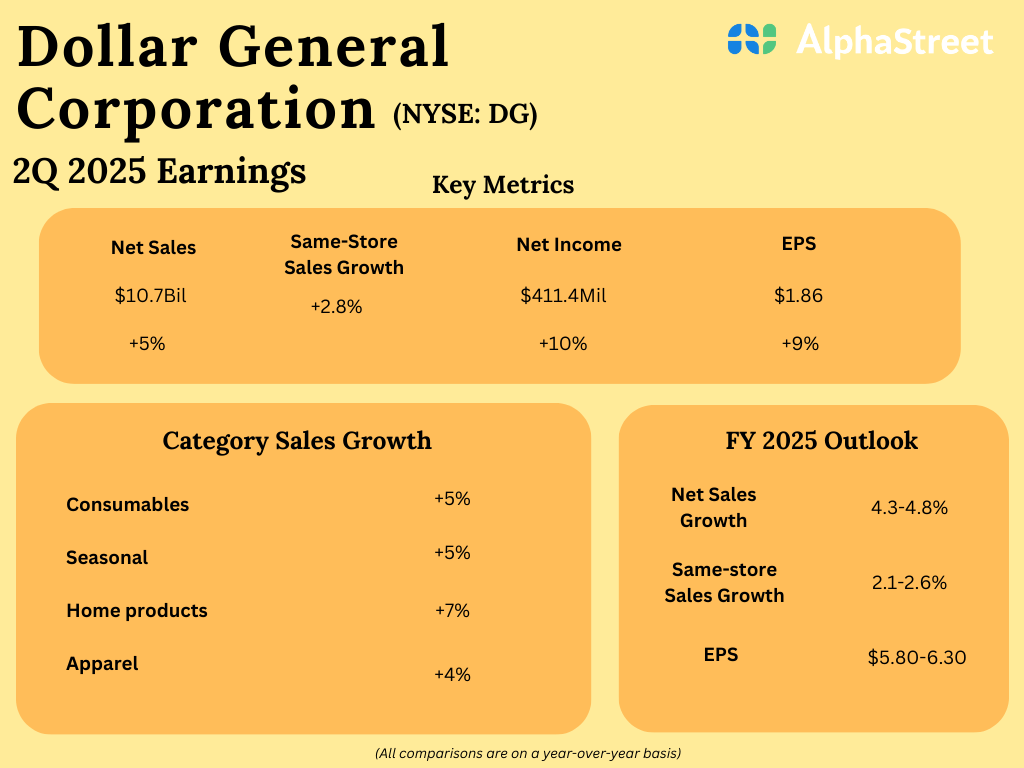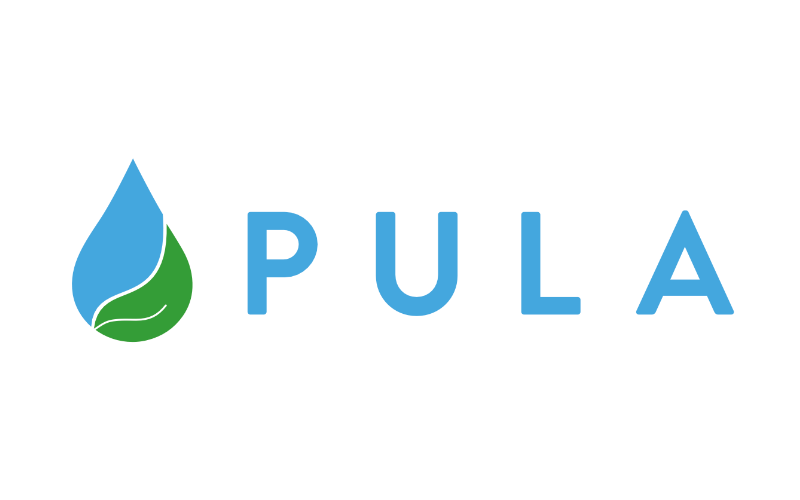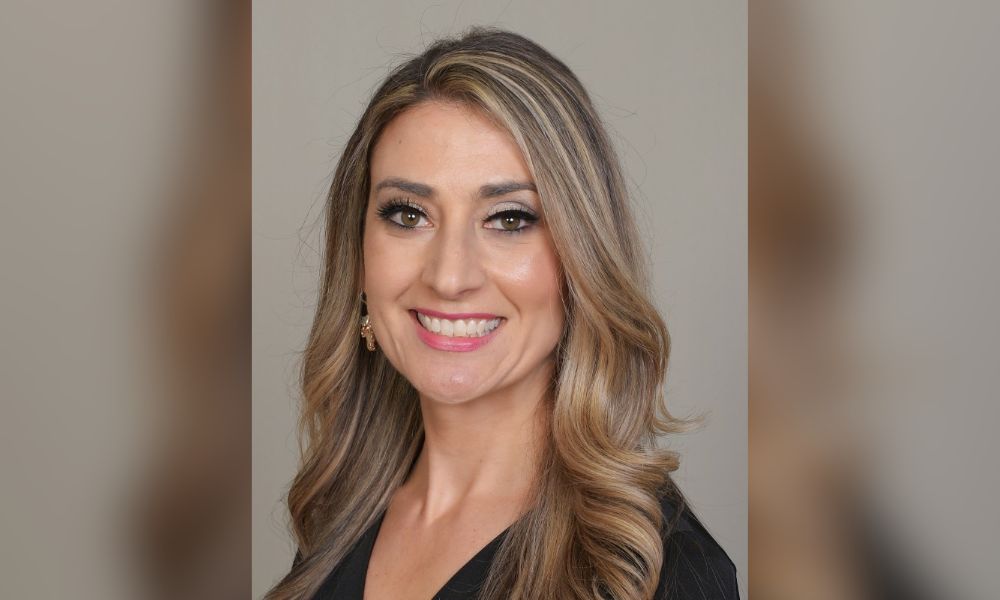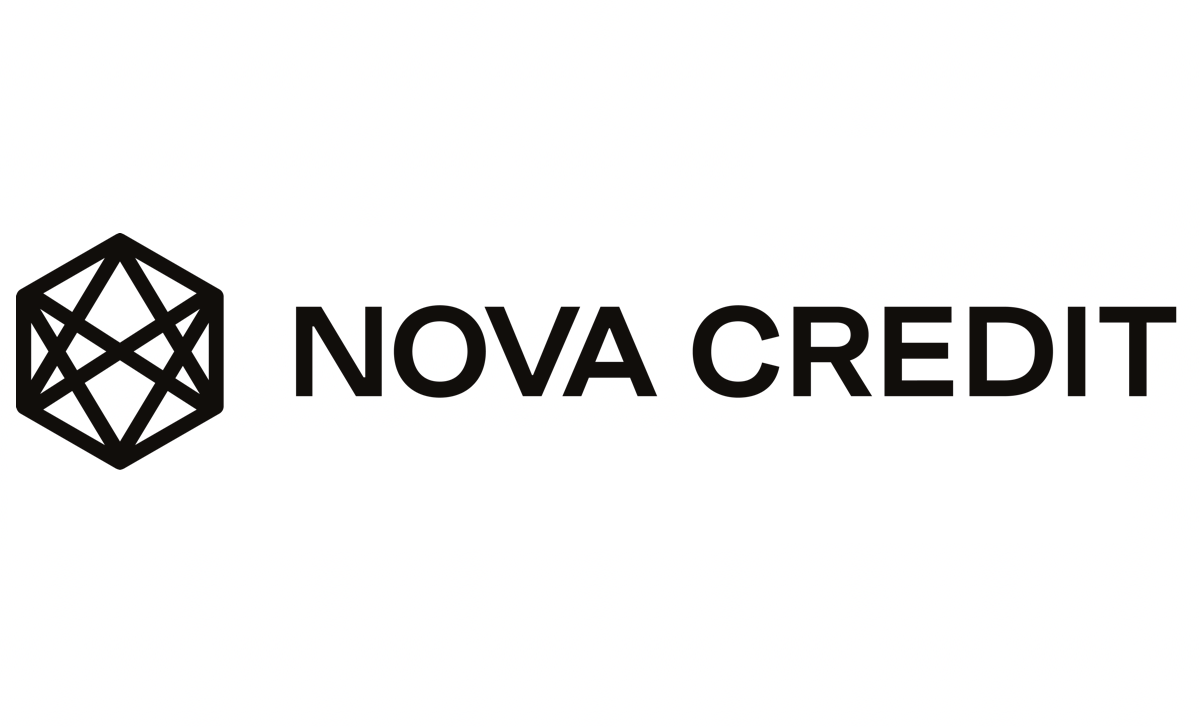General Motors Company (NYSE:GM) Wolfe Research Global Auto and Auto Tech Conference February 15, 2024 10:55 AM ET
Company Participants
Mary Barra – Chair and Chief Executive Officer
Conference Call Participants
Rod Lache – Wolfe Research
Rod Lache
[Abrupt Start] …in GM’s messaging recently. The most obvious being the increased focus on returns to shareholders that culminated in a $10 billion share repurchase, almost 25% of the company’s outstanding shares. If GM can sustain this level of profitability, we think that there could be another 15% to 20% in another year. There’s obviously some kind of disconnect here though because a 4 times PE, when you’re concentrating so much capital on reducing the share count, obviously suggests that there’s some concern about the underlying earning sustainability.
The counterargument to that actually is that GM may be under-earning because there’s so much being invested right now in electric vehicles and other areas. So, at the very least, I’m hoping we can tease out that, GM’s earnings are more sustainable than the valuation would suggest.
So, with that, I’m very pleased to welcome, Mary Barra, the company’s CEO and Chair, Paul Jacobson and Ashish Kohli are in the audience, CFO and Head of Investor Relations.
Question-and-Answer Session
Q – Rod Lache
So Maybe just first question. On balance, GM actually had a pretty good year last year, revenue up 10%, EBIT of $12.4 billion despite the strike, despite an $800 million charge for a recall and you’re investing a lot in EVs, but you generated $11.7 billion of free cash flow.
So pretty good. Of course, there are things that went right and things that went wrong over the course of the year. And I wanted to ask you, first of all, if you can go back in time, and I’m not talking about ops or macro things. But strategically, if you can go back in time and make a change or two that would have resulted in a better outcome, what would those things be?
Mary Barra
Well, I appreciate it. I mean, I do think last year was a strong year, and I think the strong performance that we’ve continually been, delivering over the last several years. When you look at the strength of our internal combustion engine business, the portfolio, I think, is one of the strongest portfolios we ever have I’ve had. I think that’s what’s allowing us to have such you know.
We’re always going to be disciplined to the market that allows us to keep disciplined, from an incentive’s perspective as well as inventory perspective. And I think that’s one of the reasons that our ice business is so strong. If I could have done a couple things, I always use the phrase, when’s the best time to plant a tree 20 years ago. The second best is right now.
If I could gone back, I think recognizing, as we manufacturing is a competitive advantage for us, but I think as we were doing manufacturing some new things, I think, spending more time in planning and derisking it because that’s one of the things was our EV production last year, especially off the Altium platform. And so that would been something that and we’ve really, rectified that now, but I think it was like, hey, manufacturing is a core competency. But making modules was something, different that we hadn’t done working with different supply base. So, I think that that would be one issue.
And then the second, building out the software team that we did last year. I think that is going to be very, very important and really going, in the latter part of the decade unlock, the software business that we’ve talked about, but I really now see the foundation there, the discipline that’s been in the in the software development, the validation process, etcetera. So those are two things I think would have strengthened our performance last year, but we’ve addressed both of them. And that’s why this is the year of execution and that we’re on-prem.
Rod Lache
Okay. So, these are areas of focus going forward. Let’s talk about the outlook. So, the biggest debate here in this circle as the outlook for EVs. It’s gotten pretty intense. The adoption curve has been a little bit shallower than people thought, pricing has come down. There’s even some questions about the level of government support that we’re going to be seeing going forward from this. On the other hand, when we look at the regulations, we see California and 14 ZEV states saying you’ve got to be 30% zero emission by 2026. You’ve got EPA that’s talking about 20% in 2027 possibly.
I’m also seeing a lot of the industry is sort of following that. And if I just look at battery capacity, it was 89 million gigawatt hours of battery capacity. Last year, it’ll be 500 gigawatt hours by next year, set up for 5 million vehicles. But the consumer may or may not be there, and that’s what I’m hoping you can kind of square with us a little bit. So just first of all, what are you actually seeing in the EV market today? Why is it that the consumer is there isn’t there yet? Is it pricing, is it that the product isn’t hitting the market or are there other things that that give you comfort with how this is all kind of coming together?
Mary Barra
I think when you’re looking at such a major transformation, it’s never going to be a straight line. And so, but we definitely believe that EVs will grow, albeit at a slower pace than they were. And I think you’ve captured some of the reasons. I think one is, having the vehicles be purpose-built for what the consumer wants. I mean, I think I’ve always said the consumer is very rational. So, they’re not going to buy something that doesn’t meet their needs, whether it’s compromises on range, compromises on performance. And so, I think getting the right portfolio out. I think the second is affordability.
When you look at where the bulk of the new Carbide market is. It’s in that, you know, 30, 35, 40 range. So, getting affordable EVs, I think, is one of the reasons we’ve had such success with the Bolt, although it was our second-generation technology. And then I think another gating factor though is the charging infrastructure. And all we know about the charging infrastructure is every quarter it’s going to get better. So, I think those are some of the factors. I think when you look at GM specifically, I think we’re going to be well positioned because we have a lot of very positive reviews that all about all of our Altium-based products.
When you look at, from a styling perspective, there’s no compromise on performance because they’re all leveraging the Altium platform. And I think the other is, we’ve said on in H2 that we are going to be variable profit, positive or neutral and then getting to our positive and then getting to our goal next year of mid-single digits. So, we’re on track with driving that profitability, and, I think we’ll continue to see adoption grow, but it’s going to be bumpy.
Rod Lache
Ultimately, you have to follow the consumer and we’ll see how the products roll out. I know that you’re very optimistic about all the things that you have in your pipeline. Does GM have a choice but to pursue this? I mean, when we think about the regulations, that 30% in the ZEV states and what’s going on, to sort of follow the consumer. And, I guess said another way, if you concluded that the consumer is higher or lower, do you have the flexibility to modulate your spending or do other things partnerships or other things to sort of adjust the cost structure to where the business is?
Mary Barra
Absolutely. I mean but we do have to make sure we’ve got a plan to meet the regulations. I’ve always said we want to have such strong demand for our EVs by satisfying the customer. And you started by saying we’ve got to ultimately, the customer decides. Well, if you have the opportunity to drive an EV, I mean, it’s better. If the vehicle meets all of your goals, if you can afford it, there’s robust charging. So as all that moves along, I think we’ll see consumers continue to adopt EVs, and I’m very positive about the EVs that we’re going to have out there.
But as it relates to, yes, we’re going to look and we’ve already done a lot over the last two years to get, be more efficient and trim the portfolio, understand what the customer wants, so, better capital deployment, and we can we can adjust that as we see what the consumer wants so. But also, two years ago, it was like build everything you can. Now everybody’s, again, we have to look a couple years out.
And although it may be this, the line is still going to be going north. As you mentioned, the all the ZEV states are going to be important regardless of the outcome of the next election. And so, we want to be ready for that, take advantage of that, because that is where the future is, and I think we’re going to be well positioned from a profitability perspective.
And then lastly, though, if there’s ways that we can partner with others, especially on technologies that are not consumer facing and be more efficient with R&D as well as capital. We’re all in.
Rod Lache
Do you think that there’s, the potential for regulations to change? I’m not talking about GM specifically, but just broadly for the industry. You guys are doing everything you can. The product is there. Well, do you think there’ll ultimately be some accommodation on the regulatory side?
Mary Barra
You know, it’s hard to say. And I think right now, we’re very optimistic of what we’ve been asking for is just harmonized because if you can meet the very stringent EPA goals that they’ve set, but still find yourself in a fine position with NHTSA, that makes no sense. And so, I think the industry has come together and communicated and we’re optimistic that the administration is going to address this.
Beyond, when you look at those, it’s the latter part of the decade, early next decade. I think that everybody’s got to be realistic of what consumer adoption is. But again, I think we’ll have much better pricing. I mean, this year, we’re going to have the Blazer and the Equinox that get into that range of where the biggest affordability is and charging infrastructure will be better. So, I think, as I look at it, we need to be ready for that, and we can’t, we’re not going to switch something because something’s been happening for the last few months, and we’ve got to make decisions that are two years, three years, four years, five years out.
Rod Lache
I want to ask about the way that I’m thinking about EVs and playing into this question of earning sustainability. I think that that $12 billion to $14 billion of EBIT that you’re targeting this year includes $4 billion of losses on EVs? I know you don’t disclose it, but I don’t think that you’ve going to generate a variable contribution margin this year. You get to positive by the end of the year, but you’re starting negative, you end positive. You have about $10 billion of R&D. The majority is AV, EV and software.
We know what the AV part is because that’s cruise, it’s $2 billion and we know you have 5,000 engineers and that’s another 1 billion. So, it’s about 3 billion just in EV R&D probably? You don’t have to nod, but that’s what I think. There’s probably there’s some fixed costs associated with running Orion and Hamtramck and all these other things. There’s people inside. So, they easily could be in that $3 billion to $4 billion range.
But then you’re saying that you’re going to get to positive mid-single digit next year. So that is a big tailwind for the company. So, let’s say you get to breakeven. What do you need to see in order to get to that, to get to that 0% to 5% next year?
Mary Barra
I think, one is scaling. And we’ve said, this year to be able to meet our goals, over if we make over 200,000, we said 200,000 to 300,000 Altium-based TVs. So, scaling is going to be a huge piece of that. Then when you look at the cost that we’re taking down, continuing to drive battery costs down. I think we’re one of the best companies positioned. Regardless of what happens in two years, four years, six years related to IRA, we’re benefiting from it right now because even before IRA came into being, we had made the decision from a supply chain effective and battery cell production in this country. So, we’re well positioned to take advantage of that. And again, you’re absolutely right. Our earnings power and increase as we get to EV profitability, and I would say we’re on track.
Rod Lache
What do you think is the biggest competitive advantages that GM has? It would look to me like you have benchmark costs. If you’re actually achieving that kind of margin. So maybe you can elaborate a little bit on that? And when you’re bringing these EVs out, the price point is a big driver. But what are the attributes that you’re trying to focus on that you think will make those products successful?
Mary Barra
When you look at the EV portfolio and we’re not just recreating the ICE portfolio we’re looking very specific to say do we have the right of all the different segments in our industry, covering the most segments, but also focus on the segments that have the highest volume and the highest revenue generation perspective. And I think that’s where we’re very well positioned.
I think the other thing is, again, with our EVs, you’re not having to make tradeoffs. I mean, these are they’ve got the right performance, they’ve got the right range, they’ve got the right functionality from a feature perspective. So, when you look at that, I think that’s what gives us an advantage. We invested early in the LTM platform. I know we’ve got to prove it this year, and we will and we are. But I think that’s a huge advantage where other companies are in the process and have frankly, go through all the learnings that we did about putting your own platform together.
And when you look at what we did with Altium, it’s scalable, you know, supporting an Equinox all the way up to a super truck like the Hummer that is giving us an advantage of scale. And so, scale is going to be important having the right vehicles because I think that gives us, you know, we’re confident we have confidence in our pricing.
Rod Lache
Let me ask you a broader question about competitiveness. One of the observations we made is GM looks like it’s one of the most efficient manufacturers in the industry. So, when we look at it, last year, we estimated that Ford had $3,500 per vehicle labor. Solana is $4,000. You were at $3,100, something like that. Toyota is a $3,100, but with lower you have a higher labor cost per hour than they do, and you have the same labor cost as them. So that’s just a great indication of efficiency. So, I don’t know if that’s well known. You probably know that?
Mary Barra
Yes. And I appreciate you bringing that point because and you know what, there’s still opportunity there. We continue to drive for efficiency. And one of the big things that we’ve worked on over the last couple of years is simplifying the product, simplifying the build, simplifying, how many options, how many how many buildable combinations. And, frankly, that works for the customer. It helps our dealers. And, just I think it’s another thing that causes us to have discipline with our incentives because we’re not having this vehicle that’s sat too long on the dealer lot, and now, it’s in everybody’s best interest to move it. Manufacturing, is a competitive advantage for us. And like I said, we have line of sight to improve it, this year.
Rod Lache
On the other hand, you have $1.3 billion of higher labor costs because of this contract. So, I’m hoping you can talk about from here, just given that reality, what do you need to do to sustain manufacturing competitiveness? Do you see opportunities and some of these things that we’re hearing about in automation, open-box manufacturing? Is this affecting your business planning going forward? What are you doing going forward to sustain that despite that headwind of higher labor costs?
Mary Barra
Everything you said, and I think you’re absolutely right. We’re looking at how do we build more efficiently. We have always focused automation on areas where either you’re causing an ergonomic issue for the employee or, it’s just hard from a quality perspective to get the consistency. And there’s a lot changing, in an automation perspective, but I still think the best way to really work on managing labor costs it’s how you design the vehicle and whether it’s open box, but there or gigacasting, you’ve got to make the right decision there. And we actually have a dedicated team working on that cross functional to look at how do we as we launch our upcoming plans, how do we drive even more efficiency. It starts with how you design the vehicle.
And, the work where we have the product engineer and the manufacturing engineer together starting in design, in the design studios, I think is going to yield a lot because and you, there’s not you don’t, you have less to automate. You’re just making the product easier to build, and that gives you more fish more manufacturing efficiency. It also gives you higher quality.
Rod Lache
What’s the timeline for when we actually start to see that? And is there anything you can share in terms of metrics and targets on what you think you can actually achieve over the next couple years?
Mary Barra
Well, a little bit different, but, you know, just what I talked about before because simple simplification plays a role. I mean, if you have less main body wiring harnesses into the plant, through the whole system. You didn’t have to design it, source it, sequence it into the plants, and get it on the vehicle.
So, that we’ve already said, for this year, we’ll save about $200 million from an engineering perspective. And there’s more to be saved. We haven’t quantified it or made it public, but I think it’s going to allow us to continue to improve our manufacturing.
Rod Lache
Let’s switch gears to Cruise. There’s been so many major strides in the technology, also challenges. I was wondering if you could maybe address whether your views have evolved on GM’s role in EV and rideshare. Obviously, it’s an enormous potential market, requires a lot of capital, requires a lot of attention. So how just give us an up to date view on what is your effective on that and what does GM want to accomplish over the next couple of years?
Mary Barra
Yes. I mean, I think we have an incredibly valuable asset with Cruise and its technology right now. And as we’ve been more deliberate, clearly, we could have handled or Cruise could have handled the transparency and dealing with the regulators and first responders better. GM, that’s actually something we do very well. So, we’ve stepped in and are assisting there.
So, when I look at the tremendous asset we have, we’re going to continue to work on making sure we keep the critical talent, in that role, continue to advance it from a safety perspective. But as we go and we’ve talked about starting in one city and demonstrating the model, and a big part of that starts with building the right regulatory relationships, building the right relationships with first responders and helping the community understand but this is safer, and we’ve already demonstrated safer than an average driver.
We’ll continue to improve there, but it’s safer. And you think about the opportunity for people who, for whatever reason, can’t drive today, giving them mobility, there are huge benefits with autonomous technology that I believe as we get, farther along is going to be a huge opportunity from a personal autonomous vehicle perspective. So, we have a very important asset. We’re in the, the reports came out. We were transparent about what we learned, with the Quina manual report, the assessment that was done by exponent on the technology, which I think is very, very positive.
What we thought happened from a technology perspective, we understand that, and that allows us to continue to improve. So, we’re working that plan in, the next couple months. I think you’ll hear us come out with a plan that’s more deliberate, and is going to not just be solely technology-focused, but really helping people understand the benefit. And you want to get to a point where a community is like, I want you here because you’re improving, the quality of life for the people who live in my city or municipality.
Rod Lache
I totally agree with you on everything that you said about the benefits of the technology and where you are and that you need to be in that. There’s the technology as it applies to GM vehicles, and then there’s also the business of ride share and making that a global enterprise. Is that second part something that you’re still committed to or is that kind of a TBD? Because what you’re doing now and demonstrating is much more focused. Is that really going to be part of GM’s role in the future?
Mary Barra
We’re evaluating what the right go forward plan is that’s right for General Motors and leveraging this, the investment that we’ve made in this asset that I think, again, we’re either a leader or among the very few leaders with the advancements that we’ve made. So, I don’t have anything specific to share right now, but we’re looking at what is going to be the best path to unlock value, not only for the General Motors shareholder because we’re the majority owner, but also the cruise shareholders. So, you’ll hear more from us, in the upcoming months.
Rod Lache
Well, I guess the question that investors are asking is there’s the company is placing a lot of scrutiny on where it’s investing capital and where the returns are going to be, and there’s probably more questions about that aspect of it than many of the other things that you’re involved in. The assumption or the question that we get a lot is, well, this is the level of spending that we see right now, a $1.5 billion or so, but it could easily go back up over the next couple of years. Do you think that that’s an appropriate framework for investors?
Mary Barra
I think what investors have to have to think about is we’re going to make investments that, we invest to generate the right return for our owners, our shareholders. So, as we look at what is the best way to create value with this asset and also strengthen our business, for the longer term because I think this technology is I believe, as we move forward in the next handful of years, we’ll be table stakes of what customers expect and from a safety benefit from across the board. That’s we’re being very thoughtful as we do that work right now, but I would tell investors we’re not going to, we’re going to deploy money that we believe is going to generate an appropriate return.
That I think we and I have a reputation that If we’re doing something and we feel that the markets change, the situation’s changed, we’re not going to just, we’re going to adjust our strategy. I think We’ve demonstrated that, and I think the discipline we have on capital allocation with where we compete, what we did with Opel, how we’ve trimmed the portfolio this year. I think they should look at that track record.
Rod Lache
I’d like to ask you about software. Maybe just at a high-level, it’s critical to your future products. You’re putting a lot of money into developing software in the Ultifi platform? Maybe just give us a kind of a high-level view on what are your learnings at this point? What is the plan at this point for that business?
Mary Barra
This is one of the areas and as I said earlier, I wish I would have brought in the team that we have now earlier, but they’re here now have completely, and it’s Mike Abbott, but he’s brought in just an incredible team. We’ve hired people from Google, from Apple, from Meta, many, many, tech companies, and they’re excited to come because of the mission, and they see the opportunity. I mean, they say, you guys have got great vehicles. We know software.
And so, we’ve already revamped the software development process and more importantly the validation process. And so, with that, as we implement that process with every future vehicle, I think we’re going to have software that exceeds customers’ expectation. I think it’s a way for us to differentiate from a experience perspective. So, I’m very excited about it.
Right now, we’re going through a little bit of a learning, pain or learning, pains as we make this transition, but the robustness of what the system is now, of how we’ll do software, and I’ve spent a lot of time with the team. I’m 100% confident we’ve got the right direction.
Rod Lache
You feel, is going to be a competitive advantage of General Motors going forward?
Mary Barra
Absolutely.
Rod Lache
I want to ask about China. So, switching gears again. So, we are constantly hearing that the Chinese are able to produce vehicles for 30% less in Western companies? We hear that from automakers around the world. What happens to GM in China where you’re producing and presumably have a kind of a more level cost structure? What do you think ultimately that that market looks like? And what learnings are you bringing from that operation into the rest of General Motors?
Mary Barra
Well, for years we’ve been looking at, you know, what are the strengths, opportunities, what we’ve learned in China, and bringing that back, I think though, when you look at the Chinese market, it’s very different than it was five years ago. When you look at the number of domestic companies that are producing EVs, but we also, there’s going to be an adjustment there because the number, there’s only a handful of companies that are profitable, from a, you know, a domestic perspective. That can’t go on indefinitely.
So, there’s going to be a sorting. But I think when you look at, where we play in the strengths of our brands, I think it’s more on, I’ll say the premium or luxury side. And then of course we have the investment in SGMW, and I think they, compete very, very well at the, at the very price sensitive parts of the segments.
So, I think it’ll be a different role that we play. But when you look at the strength and the growth potential in China, I think it’s a market that we want to play in appropriately. And I do think it’s more at the premium and the high end.
Rod Lache
Okay. Is there anything that you’re taking out of China and bringing to the rest of the organization?
Mary Barra
We regularly benchmark, and, we’ve been over there several times now, travel’s opened back up and looking at, what are the features? I mean, I think the changes we’re making in software, I think are going to be very important. But I also, you also have to look at a lot of the technology in China is in China for China by China intent. Whether and when you look at, privacy, when you look at, how autonomous technology, it’s China, even, as a global player, your technology in China is China-based.
And so, I think that’s got to be better understood of how that plays around the world. But of course, we’re looking, and I think I don’t discount any OEM. There’s something we can learn if they’re doing it better, you know, we’re going to work to implement that. So, but I think, there’s some things that are just structurally different for China, in China than it will be around the rest of it.
Rod Lache
Makes sense. And you did mention that you’re bringing some of the hybrid technology that you have in China into the North American market to diversify the product portfolio in the next couple years or so?
Mary Barra
Well, because of the changes that we’ve seen from a regulatory environment. So definitely.
Rod Lache
A lot of debate about the pricing environment and price normalization. And I think a lot of people who look at this industry just see the, an aberrational environment over the next, the past couple years with this 30% increase in average transaction prices. What are your thoughts on what normalization will look like, and are there any reasons why GM should outperform the broader market?
Mary Barra
I think if you just look at where we are in incentives, as we’re getting to more normalized and Paul shared on the earnings call, we built in two to two and half percent from a pricing down perspective, but that we’re not a we’re prudent in the way we put our plan together and give guidance. If that doesn’t happen, then that’s just, profitability that we can continue to return to shareholders. Where I think we’re unique and it’s already being proven out is we’re not number two from an incentive’s perspective. We’re below industry average. And this is coming out of COVID and I think on the strength of our ICE and what will be our EV portfolio, and I think we’ve priced right, you know, as we are putting these products out there. So, I think what is going to give GM the opportunity and the advantage is the strength of our portfolio and the customer interest.
Rod Lache
So, do you think that you would outperform that? And then based on what you see today, I mean, you’re starting out at a fairly level pricing.
Mary Barra
I would say I think we’re outperforming today based on where our incentives are compared to the rest of the market.
Rod Lache
Let me open it up to the floor if there are any questions. A couple more. Go in the back, Julian.
Unidentified Analyst
Thank you. Just appreciate you coming and talking to us today. Appreciate, the thoughts as well. Could you just what you could tell us about kind of what’s next for Cruise, whether it be in California, elsewhere? How do you think that time-line plays out with what you know and what’s in front of you? Thanks.
Mary Barra
I mean, we’re working, I think one of the important steps is wherever we deploy and we’ve talked about, as I said, deploying in one city. It’ll be working with the regulatory environment. That varies widely state to state. There’s some states that have had it at the state level versus allowing it to be at the municipality level, which I think is going to be important. So, I don’t have a specific announcement to make today, but in the pretty, near future, I think we’ll be signaling where we’re going to deploy yet this year. So, more to come.
Rod Lache
Anything else?
Unidentified Analyst
Let’s talk about the, so five years from now
Rod Lache
Same question I got.
Mary Barra
Well, I think that’s the strategic work that we’re doing right now, so I don’t want to get ahead of that. Just only to say that I do believe the technology is very important for the industry, and I think the position we have, it’s a true asset. And we’ve got to work to how are we going to deploy that to generate the most value creation.
Unidentified Analyst
Thank you very much for talking about manufacturing. GM just bought some gigacasting competency and so on, then you talked about unboxed and how you’re integrating, looking at cross functionally? Tesla is way ahead. BYD is way ahead with the marginal approach and so on. What is kind of your timeline for implementation in this new approach to manufacturing and so on.
Mary Barra
Well, I think we with every new product, we can implement more. And in some cases, we’re going back and maybe updating what we have in an existing product. So, I don’t think it’s like, wait two years and boom, it’s there. It’s gradually happening right now with every opportunity as we deploy capital. Clearly, the biggest opportunity is we launch a new vehicle.
One of the reasons we delayed, orient a year for our next battery electric truck platform is we saw areas where we could be more efficient and we wanted to deploy the capital more efficiently and launch it right to begin with. And so, but there there’s things happening right now today of driving that efficiency into the vehicle.
And as we look at what is the right structure between gigacastings and it’s a system. You can’t just look at how easy it is to build the first time. You also have to look at repairability because insurance is, if your insurance costs are so high from a replacement perspective, that all factors into the cost of ownership. We have a lot of expertise already in gigacastings from what the CT6 all the way now to what’s happening on the Celestiq, so, our team very much knows how to do that. We’re looking to optimize it across all factors, not just one.
Unidentified Analyst
When we heard, Jim Foley this morning, he was all about pro and the focus on pro as for as a growth vehicle. Given that GM has just as much, if not, more presence in the fleet side with your trucks, do you see a similar strategy for GM as well?
Mary Barra
Well, absolutely. I mean, we have a very strong commercial business. We’ve just pulled it all together with GM involved. And that is a competitive opportunity for us as well. And I think with the EV products that we’re going to have across our commercial fleets, I think that’s going to be a strength and a differentiator for us as well.
Rod Lache
How big is the commercial vehicle business for General Motors? Because it seems like that’s just a huge profit center for the company.
Mary Barra
It’s a very important part.
Rod Lache
Heavy duty trucks.
Unidentified Company Representative
Absolutely. And we haven’t broken out specifically, but it’s a very, it’s a very significant piece and I think as we go forward, we can talk about that more cause I think we have a leadership position there.
Rod Lache
Are you, just at a high level, are you sort of feeling very good about the outlook for that business because of all the infrastructure spending and all the things that we’re hearing about broadly in that space? Is that something that you’re looking at for that North American business that might be under appreciated as a source of strength?
Mary Barra
It is a source of strength today. When we look across and I think it will only get stronger, as we look at our different fleet customers and have software that helps them manage their fleet better as well as start to blend in EVs where it makes sense. And the EVs we have, whether we launched the Silverado, with the work truck because talking to our fleet customers, knowing what they want, the solutions we’re helping them with charging and planning.
So, I think they’re, that business will only continue to grow because even with some of the EV piece of it, I mean, ICE piece is very, very strong today and will continue to be. But on the EV piece of it, even when you look at maybe a slowing or slower growth of EVs from a retail perspective, virtually every company has set goals from a carbon perspective. So, I think that gives us a big opportunity as well.
Rod Lache
Let me ask about the IRA because that’s, it’s, we’re debating this and where does this go, right? You’ve got let’s say a 50-50 election at this point. And if it goes one way, then, you know, if it goes Republican, then you could see extension of the Trump tax cuts. It’s going to be some focus on how do you pay for that. And IRA seems to be a big focus for, in those circles on the pay for side.
On the other hand, GM seems to be so well positioned to benefit from the IRA with domestic manufacturing. The sourcing came together really quickly. So, your team did a remarkable job of really kind of positioning the company better than just about anybody else. I think that GM’s the only company that across the board is now qualifying. So, what is your view on that and how does that affect GM’s strategy?
Mary Barra
Well, first I have to give all the credit to Paul here because Paul has led this activity working because it’s more than just a purchasing and supply chain. It really is from a, you know, where we’ve done partnerships, investments, et cetera. So, I think we do, to your point, have a very well thought out strategy that’s, allows us, but remember we were on that path even before IRA, if you had asked me a month before IRA was passed, I would’ve said, I don’t think it’s going to happen.
So that was our strategy anyway. So, you know, I think we’re well positioned while there’s all this debate about what’s going to happen depending on what happens in the election, we’re already seeing the benefits of it, I think pretty significantly compared to virtually every other car company as you mentioned. So, our goal though, we always viewed IRA as a transition. It wasn’t going to last for forever. And so, I think the work that we’re going to continue to do to improve once we get profitability next year to continue to improve it, will just de-risk whatever is going to happen with IRA.
Rod Lache
Let’s talk about, just to bring this all together, three most important targets for General Motors this year. What are the things that you’re focusing on the most to deliver that you think we should be watching?
Mary Barra
I’ll do what you do on the analyst call, and I’ll have a couple parts to each of the three. But when you look at our strategy, it’s continued to generate the strong performance in our ICE business, demonstrate the strength of Altium, which is going to allow us to get to our profitability goals for this second half of this year and next. It’s the right software, and we’ve talked about that in the vehicles. And then fourth though, it’s relaunching Cruise appropriately to create shareholder value.
So, when we do all of that, that’s going to enable us to meet our commitment from a guidance perspective across revenue, across EBIT and across free cash flow, which I think is going to be very, very important. And then appropriately recognize and reward our shareholders for that.
So, I mean, this is a year of execution for us. I am really excited. Like I said, I know we’re only six weeks in, but we’re six weeks on track. And, this is going to be a really, I think, high performance year for GM.
Rod Lache
What’s the hardest thing. What is the biggest challenge that you’ve got in the next 12 months that where you’d say, look, if there’s going to be some risk that would be noticeable. This is where it would come from?
Mary Barra
I think, the good thing and what I like about it is it’s where I think we have, the opportunity. It’s stuff that’s within our control. It’s getting the vehicles out there and right and getting the software. And in the short-term, we’re working through some challenges we have, but I’m confident we’ll get through that with the team we have, and then it’s ours to execute.
Obviously, if there’s macro changes, we know this is an industry, and I think we’ve also demonstrated the ability to respond to what, if something happens and there’s more opportunity in EVs or there’s more opportunity in ICE, we can toggle. I mean, Spring Hill can build ease EVs. It can build ICE. We have the opportunity where we can crank up in some of our plants, our ICE production. We can add shifts at Factory zero, etcetera. So, I think we’re really well positioned for what’s unknown of what’s going to happen this year from a transformation perspective. We’ll turn those dials and meet our guidance.
Rod Lache
What do you think will surprise investors the most? You’re hearing all, Ashish and you are talking to investors all the time. You’re hearing all the same questions that I’m asking. When you think about what you’re able to do versus what where those questions or doubts or concerns are, what would be the things that you would point to?
Mary Barra
I think the biggest thing that we need to demonstrate, because last year, we didn’t. So, it, and I own that, is we’ve got to demonstrate, that we can build Altium-based products and the market wants them and we can achieve our profitability goals.
Because if you think about it as we go, even though we’ve said by 2035, our light-duty portfolio will be all EV will be guided by the consumer. But the strength of our ICE business, next year and working toward profitability on our EV business with the right software and then the addition of how we strength strengthen our leverage, the investment we have in Cruise. I think we’re uniquely positioned to really rerate the company based on performance this year. That’s why I like the fact that it’s in our control.
Rod Lache
And capital returns, those continue?
Mary Barra
We’ve said, we have a goal that we want to get, our workings to get our share count down. We’ll continue to do that. When you look at the last handful of years, it was COVID, then it was semiconductor shortages, and then it was all the supply-based challenges. I think pretty quickly when we saw the business getting to, I’ll say, a new sense of normal, we did the ASR. And we’re going to keep that capital discipline. Our capital allocation framework hasn’t changed. We’re optimizing and making sure we’re spending the right amount of money of reinvesting in the business to generate the right returns, keep a strong balance sheet, and then the rest is going to be returned to our shareholders.
Rod Lache
Well, thank you very much, Mary, Paul, and Ashish. Great to see you. Thank you.








































